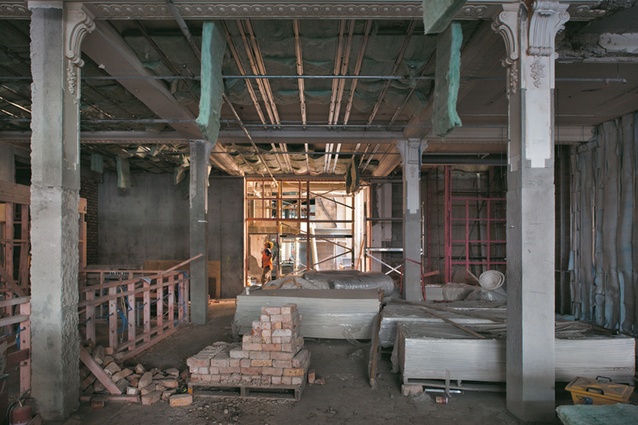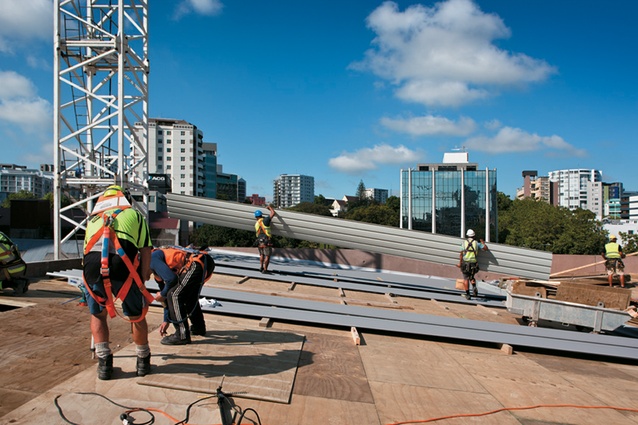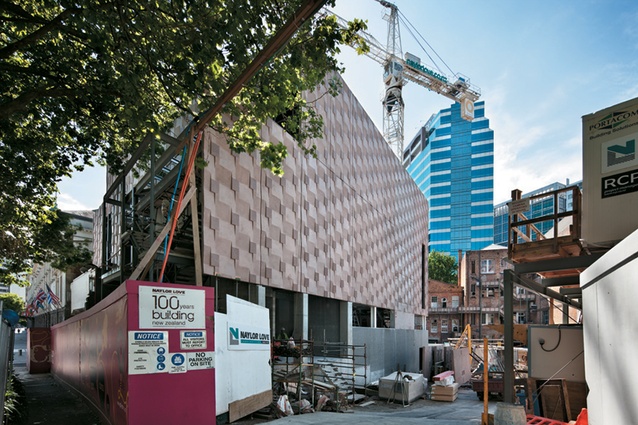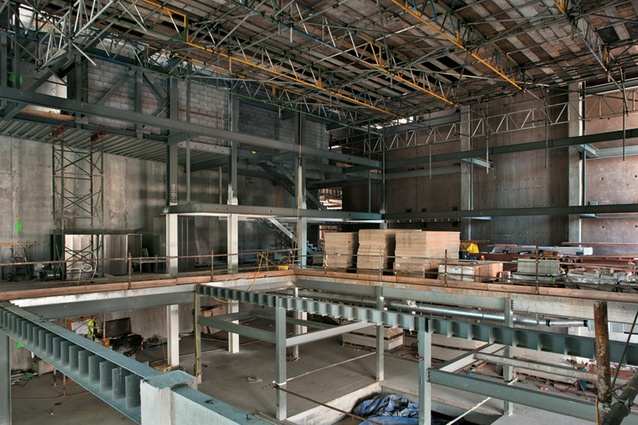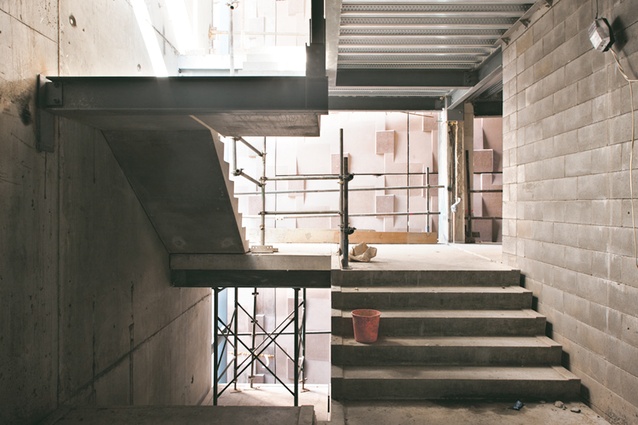Building Auckland’s new Q Theatre
The Q Theatre project has been a work in progress for over 15 years, since the old Watershed Theatre closed in 1996 and a meeting was held to examine building a replacement. The intention was to build a flexible theatre space that could hold different types of performance. Despite the project suffering some set backs - funding issues and being deferred for three years by the Auckland City Council - construction got underway at the end of 2009 and is currently progressing wel.
The new build section is the main theatre and it is effectively being built onto the southern end of the Town Hall. The restoration aspect involves renovating the Pigeon and Rikka buildings, both of which face on to Queen Street.
Dunedin-based building firm Naylor Love is the main contractor on the project. One of the first jobs was to prepare the site for the new build and this included demolishing an old car park building and the green room for the Town Hall, which sat where the new auditorium will be. The green room, where performers prepare for a show, was temporarily re-housed until a permanent one was built as part of the new theatre. The car park was a less straightforward procedure. Mike Atkinson, project manager for Naylor Love, says that they found the car park building was actually attached to the Town Hall. “It used to be considered more efficient, rather than isolating one building from another and doing extra formwork on the outer face of the new building. It was way easier just to build it up to the adjacent building. The car park building was poured hard up against the Town Hall. In order to demolish the wall we had to wire saw some parts and chip it off. It was extremely time consuming but once we had separated the old car park from the Town Hall we were really able to push on with building.”
As with most central city projects, what is under the ground threw up the first set of challenges. The ground was supposed to be East Coast Bay rock; it was in fact largely in-fill. It was once a small valley that ran down from Meyers Park, complete with a stream. The valley had been filled and the stream converted to a stormwater tunnel. Some of the feeder tunnels into the main drain had to be re-routed. Atkinson says, “What we found was a lot of fill and obstructions, such as concrete blocks where the piles were supposed to go. It is hard to deal with that with limited headspace, so we had to pop some guys down there with pneumatic drills to break it up. Some of the obstructions were so big though, so we had to leave them and relocated the piles.”
As with any complex construction procedure, planning was a crucial element, and some of the other delays the groundwork had brought about served as useful time to get the planning right. The ‘box’ was built in two lifts, with the erection of the first set of pre-cast walls followed by the second set. There were some small floors constructed with the first lift, but they offered little bracing so additional bracing was used.
At the base of the new theatre is a series of rooms, including the new green room for the Town Hall. Performers for productions in the Town Hall will travel along a small tunnel from the green room, which looks as if it could easily double as a nuclear fall-out shelter. The green room, as most of the theatre spaces, is highly acoustically insulated. An orchestra could tune up its instruments without disturbing a play upstairs.
Q Theatre is entered via the Pigeon Building from Queen Street, where you walk directly into the foyer. The foyer has a box office, café and bar and leads through to the auditorium. Below ground there is a rehearsal room that is acoustically isolated. On the first floor, above the foyer, is a studio that can hold an array of different performances. There is a myriad of rooms as you go from the entrance to the auditorium, most of which the public won’t see: dressing rooms, a green room, kitchen, smaller rehearsal rooms; in fact, everything needed to support a live production.

